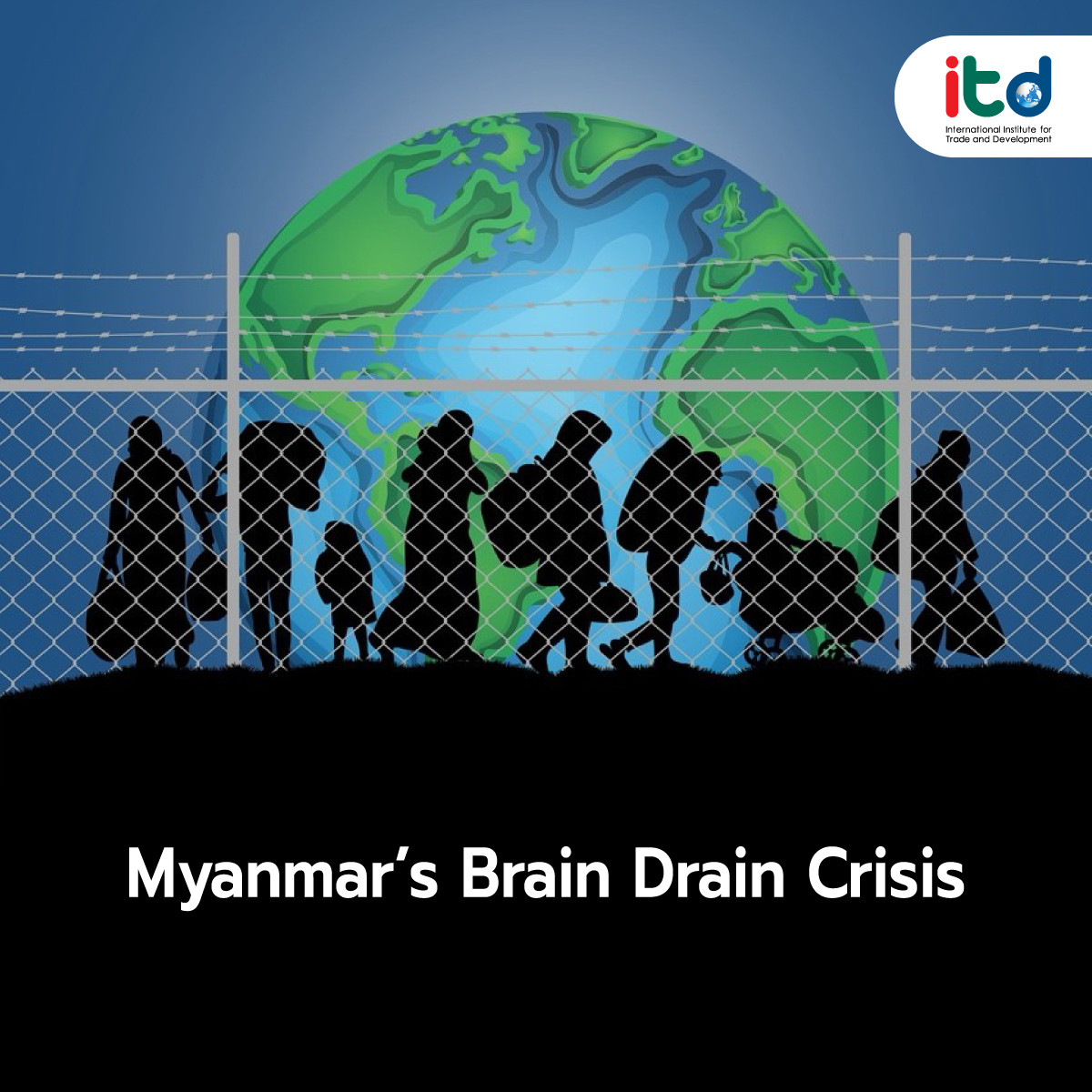About Documents
The protracted political conflict in Myanmar, which has persisted for more than three years with no immediate prospects for resolution, has led to economic stagnation. This situation has resulted in a brain drain or the emigration of skilled workforce to other countries. This phenomenon has been ongoing since the coup in Myanmar in 2021.
The signal of the brain drain began to emerge shortly after the coup in Myanmar, as the young population engaged in civil disobedience through silent protests, including abstaining from work and education, leaving the country, or even fleeing to join opposition forces. Furthermore, highly skilled Myanmar nationals who had decided to return to Myanmar, motivated by political reforms over the past decade, began to leave the country due to the lack of political and economic stability in Myanmar itself.
The brain drain situation intensified following the Myanmar government’s announcement of conscription in early February, with recruitment set to begin in April. As soon as the news of mandatory military service spread, long queues for visa applications formed outside the Thai Embassy in Yangon. Moreover, there have been continuous reports of Myanmar nationals being arrested along the Thai border for illegally entering the country as young people from Myanmar seek to avoid military conscription.
Such a brain drain inevitably exacerbates the already fragile economy of Myanmar, making it even more vulnerable. The loss of human capital in this manner impacts both the short-term and long-term. In the short term, Myanmar faces a labour shortage, especially in professions requiring high skills, such as doctors, nurses, teachers, and engineers. Producing labour for these professions requires significant time and investment, which, in the context of Myanmar amidst a civil war, makes it particularly challenging to replace those who have left the country.
Furthermore, in the long term, state revenue in the form of taxes will decrease, as the brain drain in Myanmar is a consequence of warfare, differing from many countries. For example, other countries can rely on the income from remittances sent back by migrant workers, as in the case of the Philippines. However, in the case of Myanmar, the outflow of labour due to war and the desire to oppose the military government means that the likelihood of remittances being sent back to the country, especially through banking channels that the state can control, is significantly reduced.
Moreover, this situation further diminishes the prospects for elevating Myanmar’s future economic development by creating new innovations due to the scarcity of skilled labour. This scenario is reminiscent of the large-scale exoduses following the fall of Vientiane, Phnom Penh, and Saigon in 1975, which resulted in a significant outflow of refugees from these countries, including skilled workers. These individuals were crucial mechanisms in driving the economies of their countries.
This phenomenon is not only a challenge for Myanmar but also poses a challenge at the regional level, especially for neighbouring countries like Thailand. Currently, there are over 1.35 million refugees from Myanmar, with more than 90,000 residing in Thailand. Therefore, as one of the nearest destinations, Thailand must prepare to handle the influx of migrants. In addition to establishing humanitarian corridors along the border, the Thai government should implement measures to facilitate the immigration of skilled workers, who will enter through diverse channels.
Author:
Mr. Bhuchis Phoompakvan
Researcher
International Institute for Trade and Development (Public Organization)
www.itd.or.th
Publication: Bangkok BIZ Newspaper
Section: First Section/World Beat
Volume: 37 Issue:12596
Date: Wednesday, March 13, 2024
Page: 8 (left)
Column: “Asean Insight”






